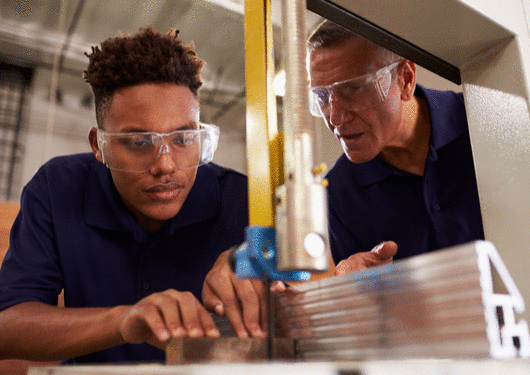
Visit Our Sponsors |
|
|
|
|
|
|
|
|
|
|
|
|
|
|
|
|
|
|
|
|
|
|
|
|
|
|
|
|
|
|
|
|
|
|
|
|
|
|
|
|
|
|
|
|
|
|
|
|
|
|
|
|
|
|
|
|
|
|
|
|

While all significant issues, here are three trending developments that are less discussed - but will have a significant effect on U.S. manufacturers in the coming decade.
1. The ongoing shift from a labor rich to a labor scarce global economy
Experts often talk about the aging population and its impact on the labor force. The diminishing population is more acute for manufacturing: while the median age of the American workforce is around 42, the median age of its manufacturing workforce is closing in on 45.
That said, compared to the rest of the industrial world, the United States still has favorable demographics. Not only is our country’s total fertility relatively high, its net immigration tops all other nations. While our society will continue aging, it will do so at a slower rate than in other countries. According to the U.S. Census Bureau’s report “An Aging World,” of the world’s 25 oldest countries (defined by the proportion of citizens aged 65 and over), Europe has 22, led by Germany and Italy. Japan is currently and will remain, the oldest nation in the world through 2050 (South Korea and Taiwan will join Japan at the top of the list by that date). China is also aging rapidly: by 2050 it is expected to have 350 million senior citizens, about 27 percent of its total population. Meanwhile, the United States ranks 48th in the world in this category, and -primarily due to its more permissive immigration policies- will drop to 85th by 2050.
2. Urbanization will reshape supply chains and accelerate labor productivity growth
As global population growth slows and the world ages, people are concentrating in metropolitan areas. In 2007, for the first time in history, a majority of human beings lived in urban areas. While the number of people living in rural areas has leveled off at around 3 billion, the number of urbanites will grow from around 4 billion to more than 6 billion by 2050.
RELATED CONTENT
RELATED VIDEOS
Timely, incisive articles delivered directly to your inbox.







